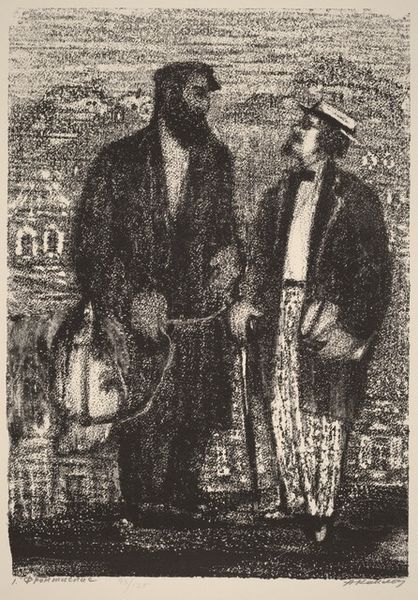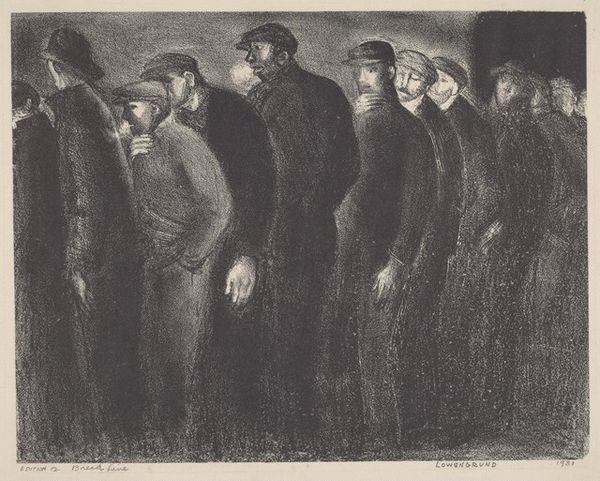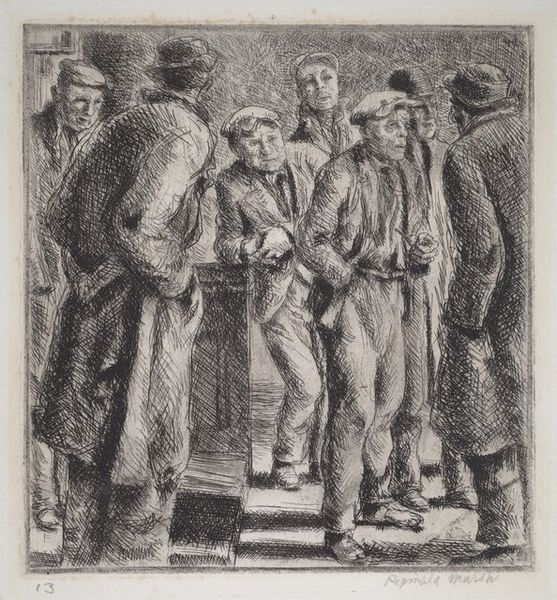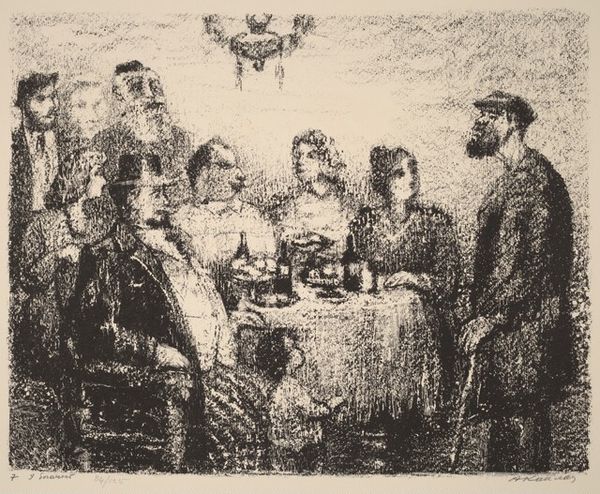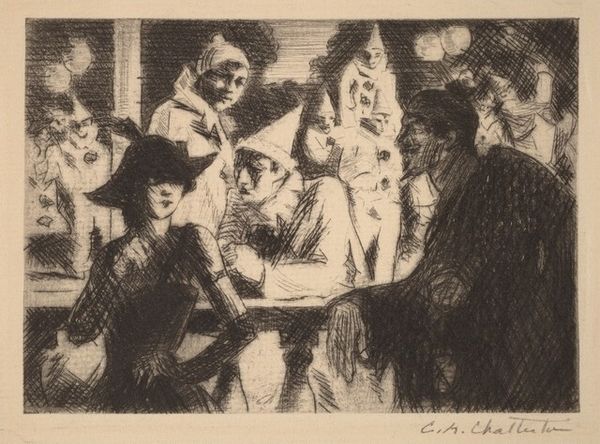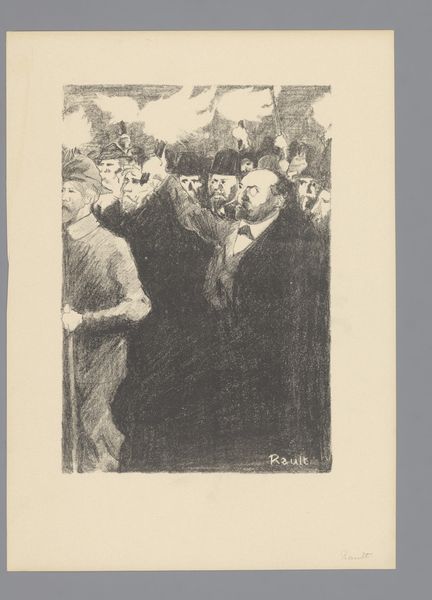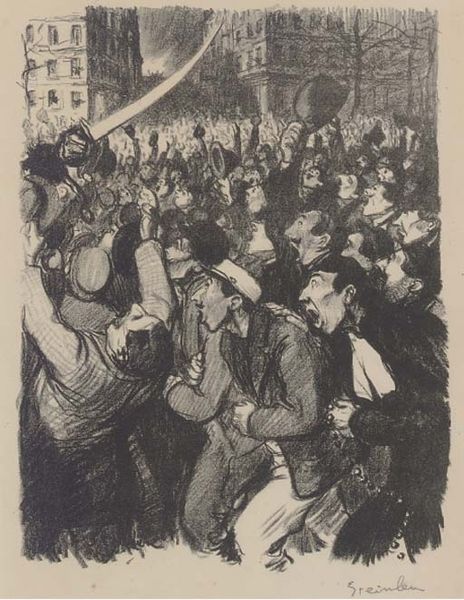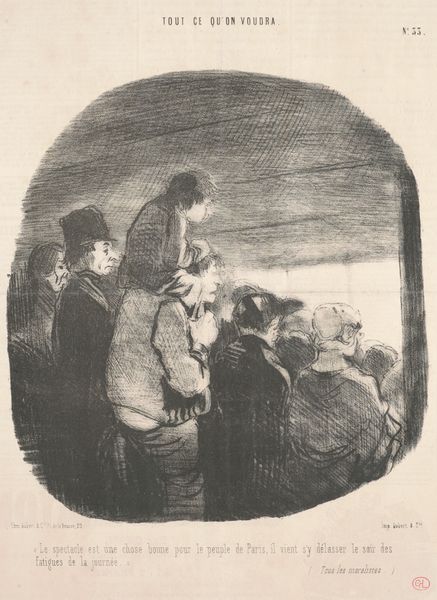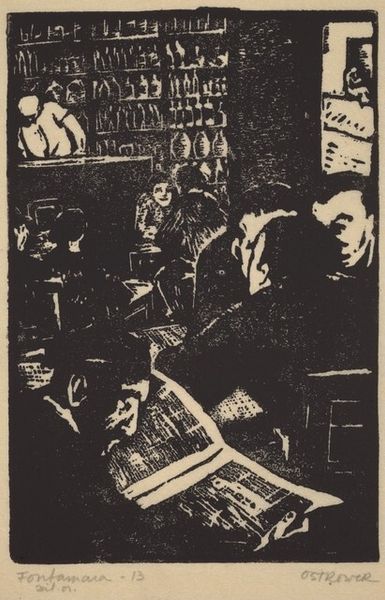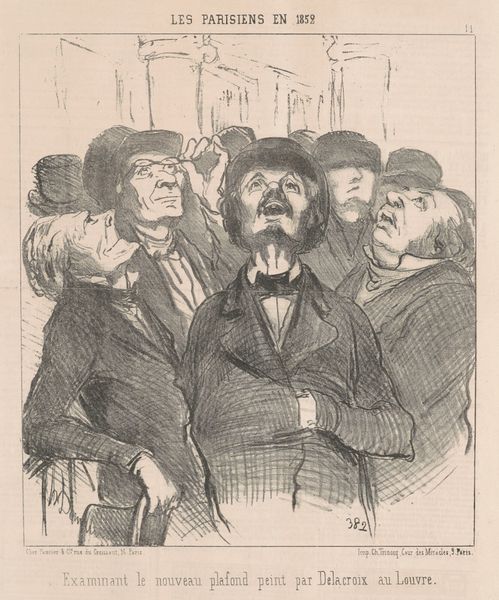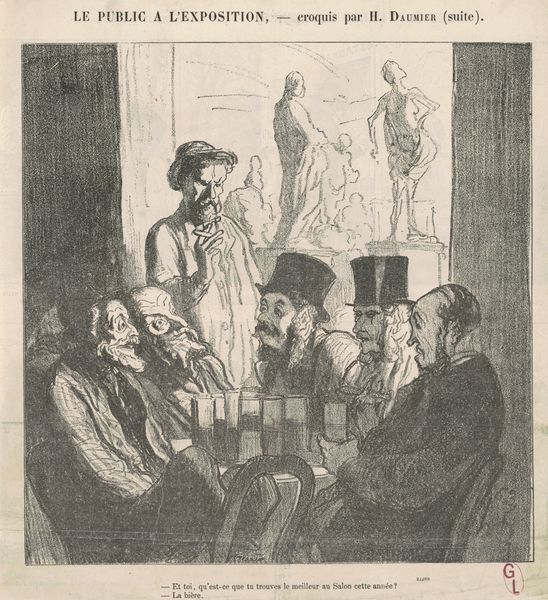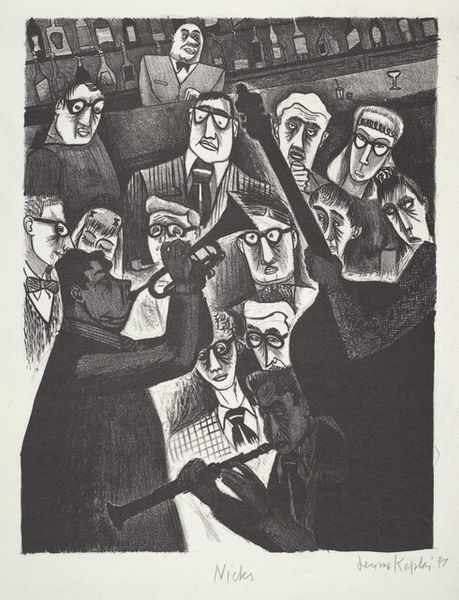
graphic-art, print
#
portrait
#
graphic-art
# print
#
figuration
#
realism
Copyright: National Gallery of Art: CC0 1.0
Curator: Looking at this dense and striking print, “At the Stock Exchange” by Anatoli Lvovich Kaplan, created between 1957 and 1961, I’m immediately struck by its textural richness. The lithographic crayon must have been worked incredibly! Editor: It does feel crowded, almost claustrophobic. There's a sea of faces here; the high concentration of dark colors creates a palpable moodiness, as if these individuals are overshadowed by unseen forces. Curator: Consider that in the Jewish symbolic order, gatherings of people can signify community, shared fate, or collective decision-making. The men, rendered similarly, almost uniformly dressed in hats and dark coats, blur together visually, perhaps symbolizing the forces of economic structures influencing individuals within. Editor: I'm interested in how Kaplan built the image, physically. Lithography depends on the tension between grease and water, painstakingly layering textures with lithographic crayon on stone. The dense accumulation, this build-up of dark marks to indicate the faces – labor in service of an artwork that, ironically, depicts labor and finance. The final prints were produced and disseminated from the stone through human efforts and the press. Curator: Note that the figures at the foreground engage in discussion and exchange, hands holding papers; these suggest complex transactions or negotiations. They serve as cultural cues associated with commercial interaction. The subtle, almost concealed presence of individuals in the backdrop, with only outlines or shadowed figures emerging from a fog of black, are they being swallowed by economic tides? Editor: Agreed, and I keep circling back to Kaplan's engagement with this material; I'm thinking of other printmakers and their social engagement at the time. Could one also frame Kaplan's graphic decision as a response to Socialist Realism? The dark colors and mood serve as visual resistance or critique against the more common style from this period. Curator: A powerful intervention by using darkness and fragmentation to depict an economic space so symbolically charged. It creates visual metaphors which allow deeper contemplations on finance, identity, and place. Editor: Agreed. Ultimately, it encourages us to reflect on the materials, work, and processes intertwined with the structures surrounding our modern economy.
Comments
No comments
Be the first to comment and join the conversation on the ultimate creative platform.
